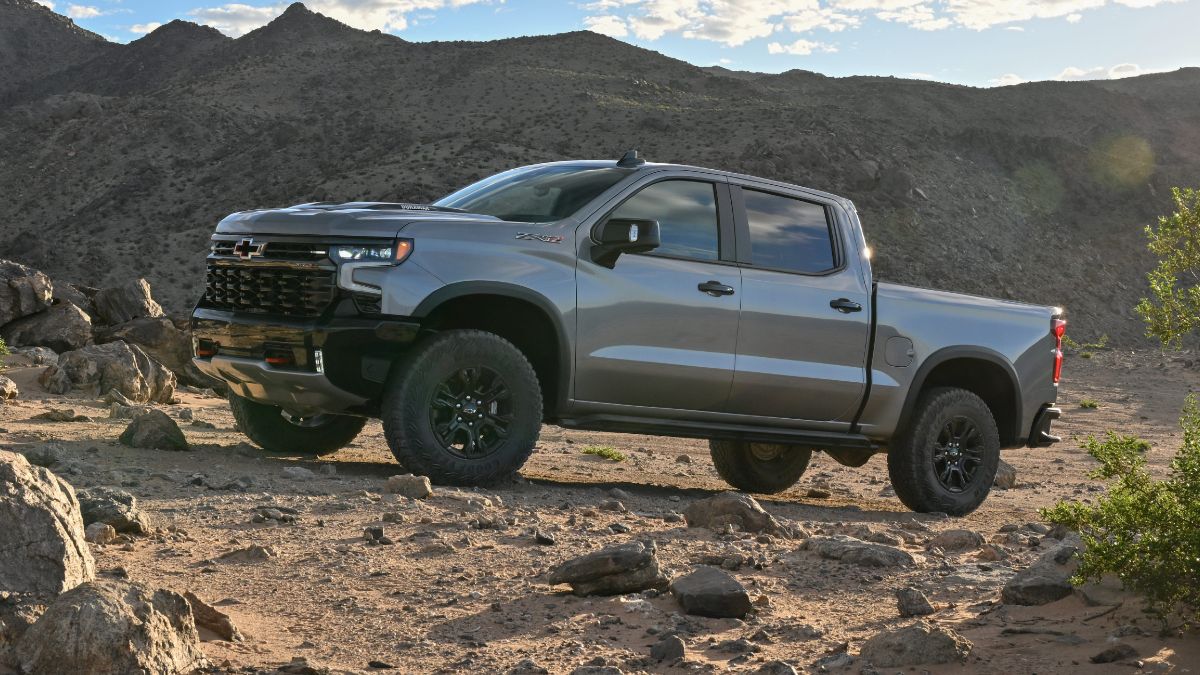While everyone talks about oil changes and fluid top-offs, tire pressure is another key piece of automotive maintenance — and one that you can often take care of yourself. While your Chevy Silverado is capable of incredible things, even the toughest trucks require proper tire pressure to ensure performance, efficiency and safety at all times. The good news is, checking your tire pressure is a quick DIY task that can make a big difference for your truck in the long run, so we’re going to tell you how to do it yourself.
Why Tire Pressure Matters
Before we dive into how to actually check the tire pressure of your Silverado, we want to start with the basics and explain why exactly tire pressure matters. Driving on underinflated tires can reduce your fuel economy ratings, cause sluggish handling and increase the tread wear on your tires. It’s even possible for them to become overheated, which can lead to a blowout, so it’s not something you want to risk.
On the other hand, driving on overinflated tires can reduce your traction, cause uneven wear on your tread and reduce your ride quality. But when you have proper pressure, your tires maintain optimal contact with the road and in turn ensure you’re getting the best performance out of the suspension, steering and braking systems of your Chevy Silverado.

What You’ll Need
Modern vehicles, including the Chevy Silverado, often include a feature called TPMS (Tire Pressure Monitoring System). This system will display real-time tire pressure information in your driver information center, and will even display alerts if your tires become underinflated. These systems aren’t always as accurate as doing it yourself, though, so it’s still good to check your pressure manually every once in a while. When you do, you’ll need the following items:
- A tire pressure gauge, which can be digital or analog
- An air compressor, either one of your own or at a public place like a gas station
- Your owner’s manual or the placard inside the driver’s side door, which displays the correct PSI (pounds per square inch) to which your tires should be inflated
Step-by-Step: How To Check Tire Pressure
- First and foremost, you want to make sure that your tires are as cold as possible, as tire pressure can fluctuate with temperature. In order to get the most accurate reading possible, you want to check your tire pressure when they’re as cold as possible, which means first thing in the morning before you’ve driven anywhere or at least three hours after it was last driven.
- Next you’re going to want to figure out the recommended PSI, which for most Silverado Models should be between 35 and 45 PSI. As mentioned, you can find this information in your owner’s manual or on the sticker inside your driver’s side door. Make sure to check that the front and rear tires don’t need different PSIs, as they can vary depending on your load or towing setup.
- Now that you know what they should be set to, it’s time to actually check the pressure. To do that you’re going to need to unscrew the small cap on your tire’s valve stem, making sure to keep it somewhere safe as it’s obnoxiously easy to lose.
- Once the cap is removed, you can firmly press your gauge into the valve stem until you hear a very brief hiss of air and get a reading. How it’s displayed will depend on the kind of gauge you have, so just make sure that you have a reading.
- Compare the reading that you’ve received to the recommended PSI to determine if the tire is properly inflated or if it’s under or over. If underinflated, you can use the compressor to add air in short bursts and then recheck the pressure. If overinflated, gently press the valve with a small tool – such as the gauge itself – to release air.
- DON’T FORGET TO REPLACE THE VALVE CAP! You kept it in a safe place for a reason, so screw it back on and that tire is all set. Repeat this process for each tire, including the spare if necessary.
We hope that this step-by-step guide and additional information has helped you figure out how to check the tire pressure in your Chevy Silverado. You should be checking your pressure at least once a month, or before any long trips or heavy towing jobs. This is especially true during winter months, as cold air can reduce PSI. If you have any questions, don’t hesitate to get in touch with us right here at Jim Glover Chevrolet!



